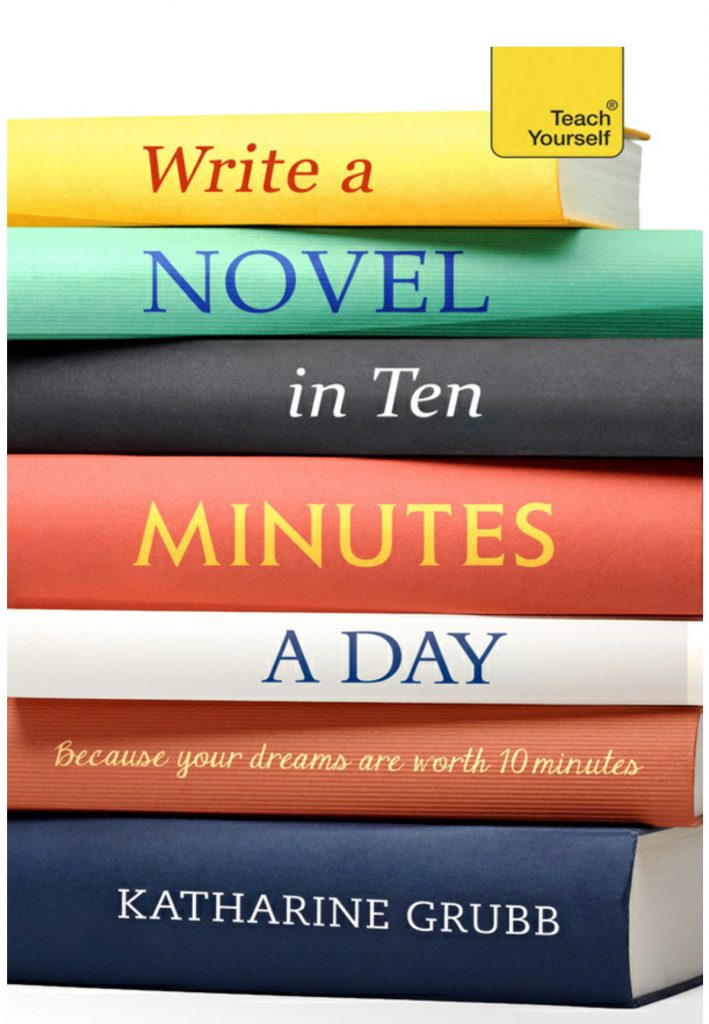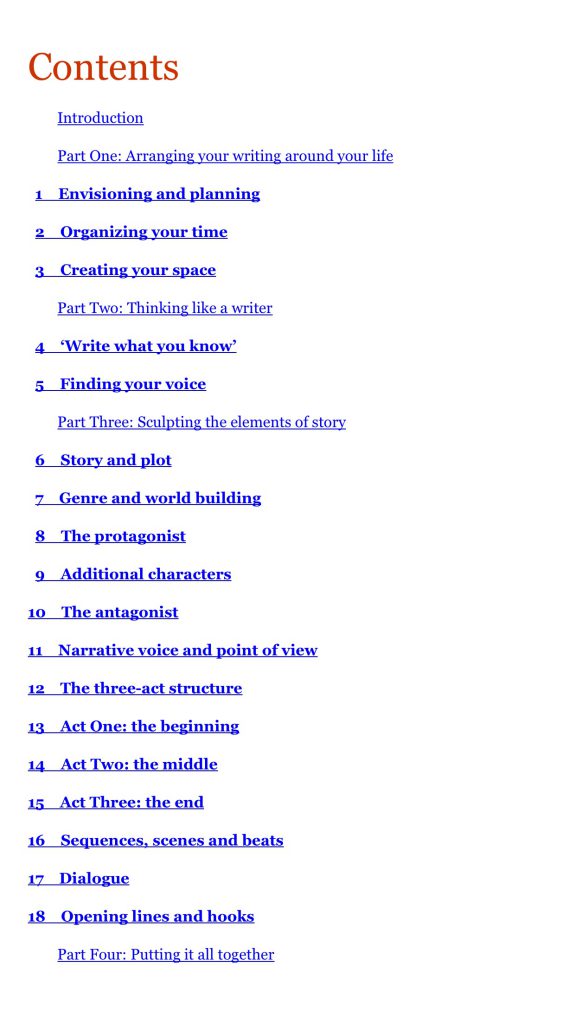Over the next 3 months, I will test drive one of my recommended products in order to give you an up to date review and case study of the product and to see how it performs when put to the test of writing a novel in 3 months. I have a few in mind and will proceed to test drive all of them eventually.

The first book I want to trial is Write a Novel in Ten Minutes A Day by Katharine Grubb. I will complete her book/workbook over 12 weeks/90 days since I realistically have limited time and will post monthly updates as I proceed through the workbook and writing my novel. I will become one of her 10 Minute Novelists!
It will take a month approximately to complete her Story Element section (Part 3), which should allow me to begin writing in 4 weeks time. Until then, I will use my allotted writing times to complete her 10-minute exercises and continue to freewrite and write short stories, 10 minutes at a time.
I can write 250 words in 10 minutes, so in order to write a 100k first draft, I need to write 1,666 words a day, with 7 sessions a day. I will not schedule a day off, so will work 7 days a week, over the remaining 8 weeks, in order to complete this challenge.
Overview – Test Drive
- I am going to use the ten-minute method to write a novel in 3 months (90 days).
- I will have to write in 7 x 10-minute sessions in order to reach my target.
- The first month, I will complete the Part 3 tasks of Write a Novel in a Month, and start writing in 4 weeks time.
- I will start with a new story idea which I haven’t started developing yet, and go from there.
I will make this my number one priority, and my first job to do in my only daily free time;
- During my daughter’s nap (10min)
Other than that slot, I will:
- Write first thing before she wakes up (10min x 2)
- Maybe 2 more times during her nap (10min x 2)
- Write at night before bed – I will finish what I didn’t get done during the day (10min x2)
This should allow me to complete my 100,000-word novel in the allotted time.
Summary of Write a Novel in Ten Minutes A Day
Katharine Grubb outlines the following sections in her excellent book:

I will endeavour to use Grubb’s recommended three act structure, but do believe I may revert back to Larry Brooks’s 4 Part Story Structure, as it really speaks, and makes sense to me. But this case study/test drive is about getting a story/novel out, getting the words onto paper – so in the end, it doesn’t matter which story structure you use, as long as you get your story out and finished. That’s why Grubb’s first Part in this book is the most important to me to test out; it’s the getting the words out – finding and making time to write, which so many of us are struggling with.
There a whole lot more issues that we writers struggle with, of course, and Fear tops the lot of them. And Procrastination.
But today – this week – I’m putting all that away, all that crappy fear and excuses, and am setting this goal and my plan to achieve success. There are no more excuses, today or for the next 3 months.
Now, as I’ve read the book already, I am going to alter the order I complete her steps in; tailoring it to myself. I will jump straight to Part 3: Sculpting the elements of story.
My Steps:
Step 1: Create my writing schedule and space
Step 2: Find and develop a story idea
Step 3: Develop my Outline or Beatsheet
Step 4: Write
Step 1: Create a writing schedule and space
Work through Grubb’s Part 1.
Step 2: Find a story idea
In order to do this, I will work through Grubb’s Part 3, and start developing a story seedling into a full fletched idea. If I come up struggling anywhere, I will revert back to one of my trusty method’s to stay on track and will update you whenever I do this.
This will include Grubb’s Chapters: 6 through 11 (Story and Plot through to Narrative voice and POV)
There are a few different resources I typically use to help create my novels; it’s not just one perfect structure or method I found in a book somewhere, it’s more like a mash up of different sections from different books. I must note that Grubb, herself does use Robert McKee’s Story as a basis for her Story Element tasks.
I always tend to fall back on:
- The Four Part Story Structure (4PSS) developed by Larry Brooks (covered in his books Story Physics and Story Engineering)
- Robert McKee’s Story
- Nine Day Novel-Writing by Steve Windsor (he uses the 4PSS from Brooks too, but has summed it up neatly and simply in his books, and has great tips on how to get the story out fast.)
- K.M. Weiland’s Outlining Your Novel and Structuring Your Novel
- and a sprinkling of Matha Alderson’s (the Plot Whisperer) The Plot Whisperer Book of Writing Prompts.
You may notice that these are all (bar one) structure or plot related books. This is the aspect that I have most struggled with, nailing my story before I write it – or at least just nailing it a little 😉
I believe that you need some sort of road map on your writing path, especially if it’s a novel, and using the above books, I’ve found my tools in creating a road map. Now, some of you may not want or need a road map and that’s ok. Just use what feels right for you. Take what you want from this blog or any of these books, and use it however you like. That’s what all this advice is, advice from one writer to another, and it most definitely may or may not work for you 🙂
Step 3: Develop my Outline or Beatsheet
This will include working through Grubb’s chapters 12 through to 16 (Three Act Structure and Scenes, Sequences and Beats.)
I will also work through Chapter 17 (Dialogue) and Chapter 18 (Opening Lines and hooks) at this point.
Step 4: Write
Well, there you have it; my how to write a novel in 3 months plan. I hope you will follow along on the journey with me:) If you have any questions or thoughts on this process, please do not hesitate to leave me a comment below. I will reply as soon as I can!
Need Additional Writing Resources? Head Over Here To See My Recommended Resources List!
Happy Writing,
Erica

Leave a Reply